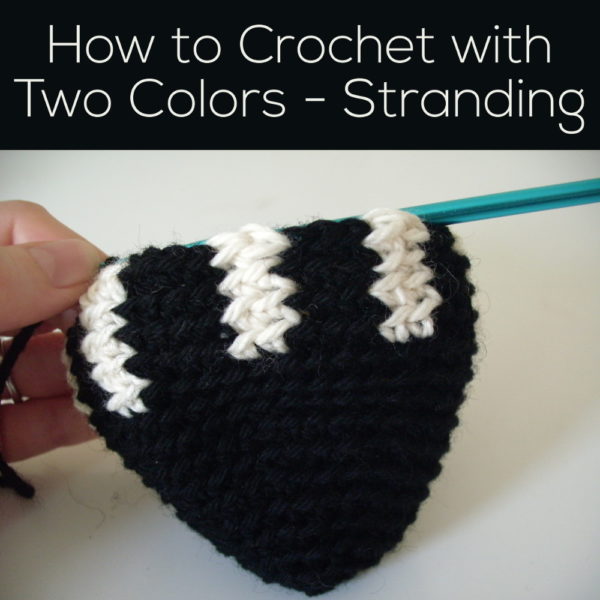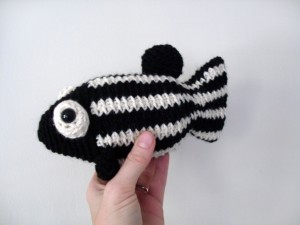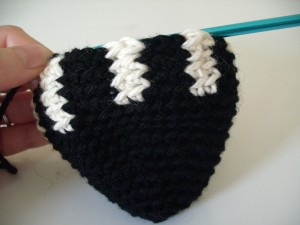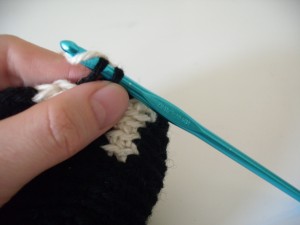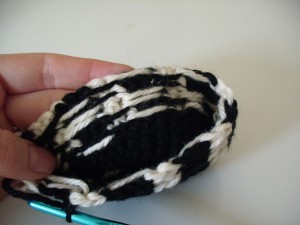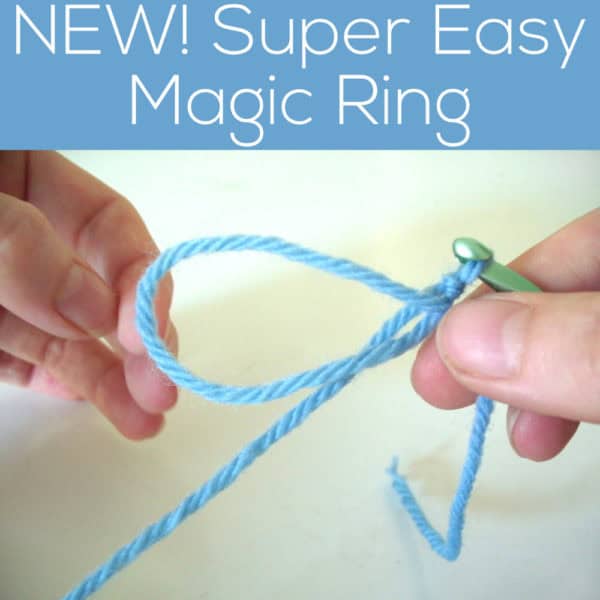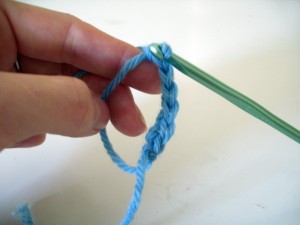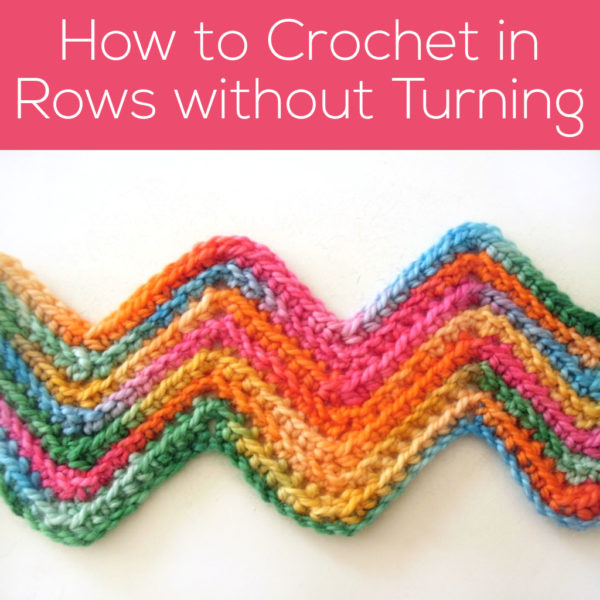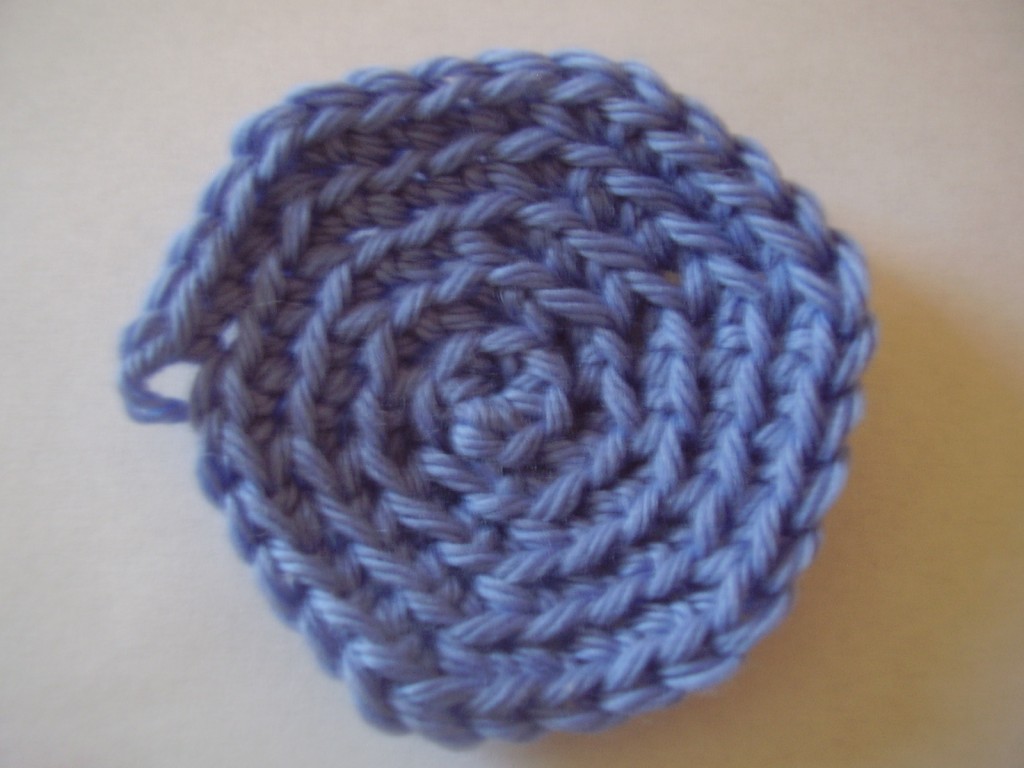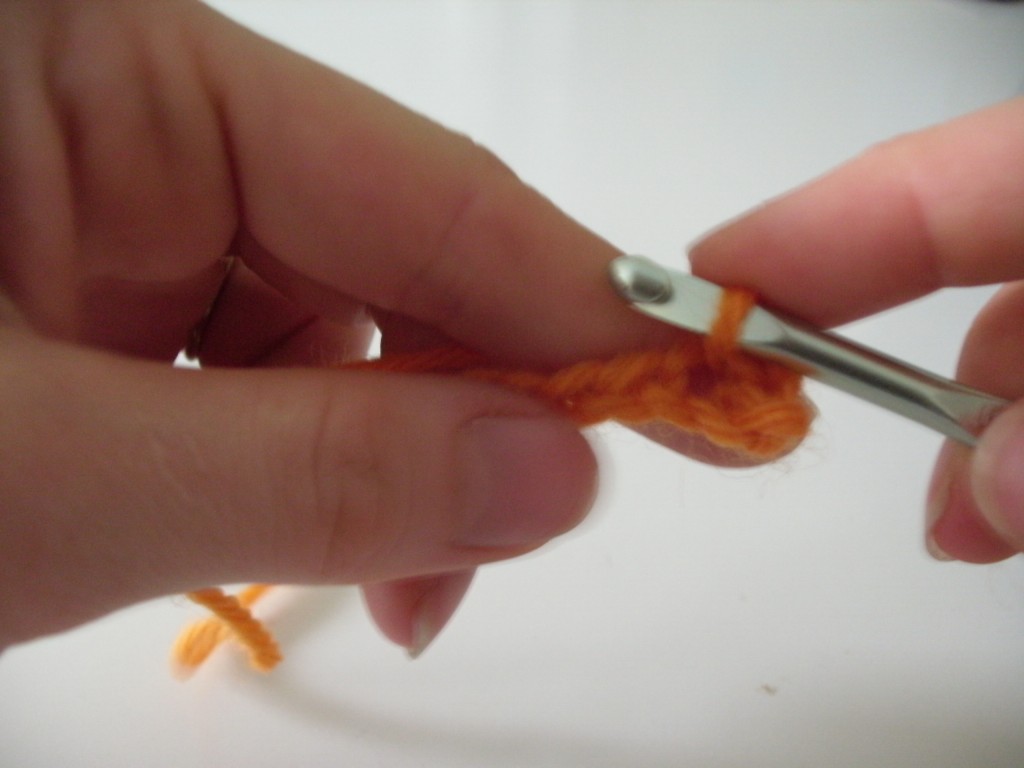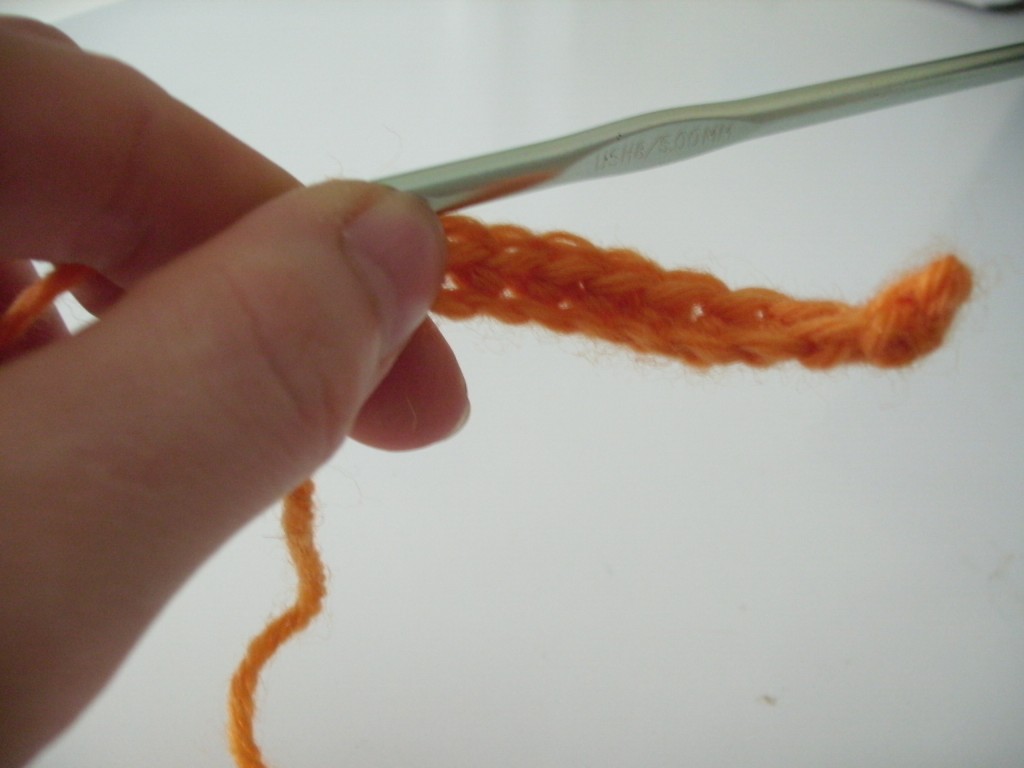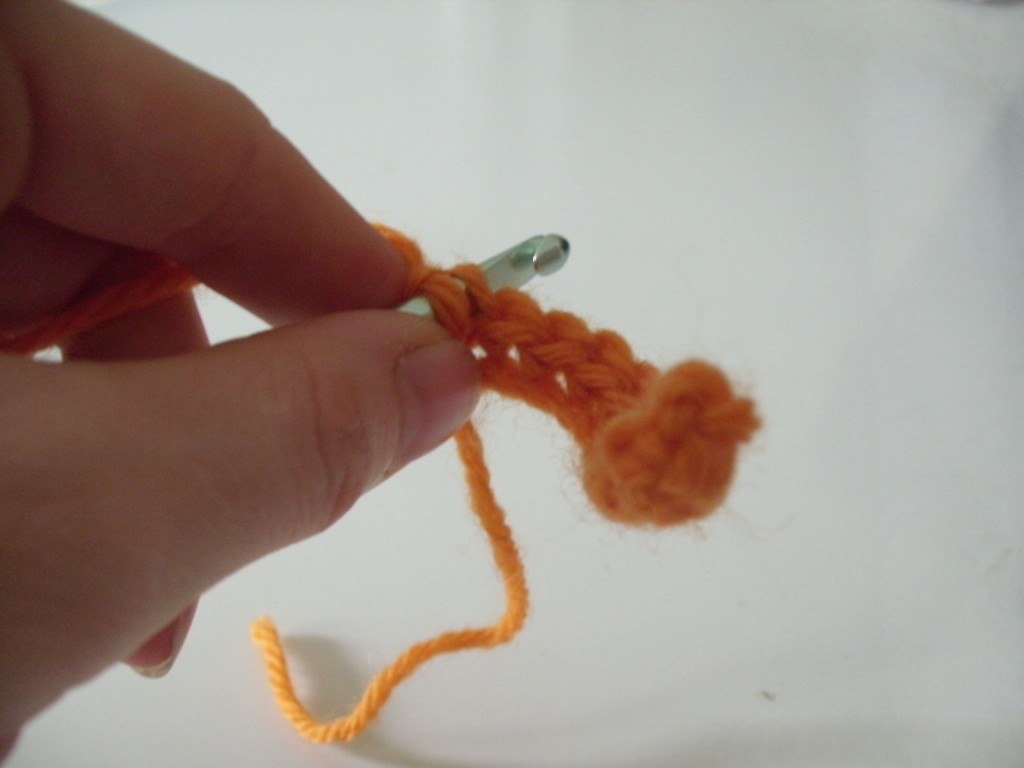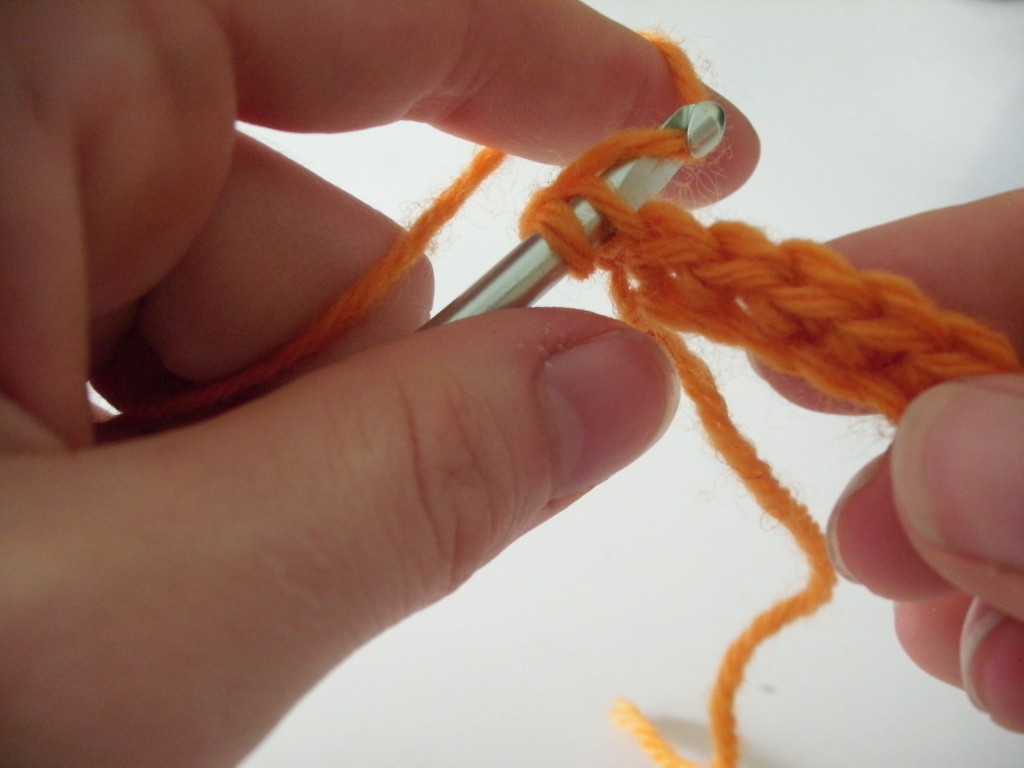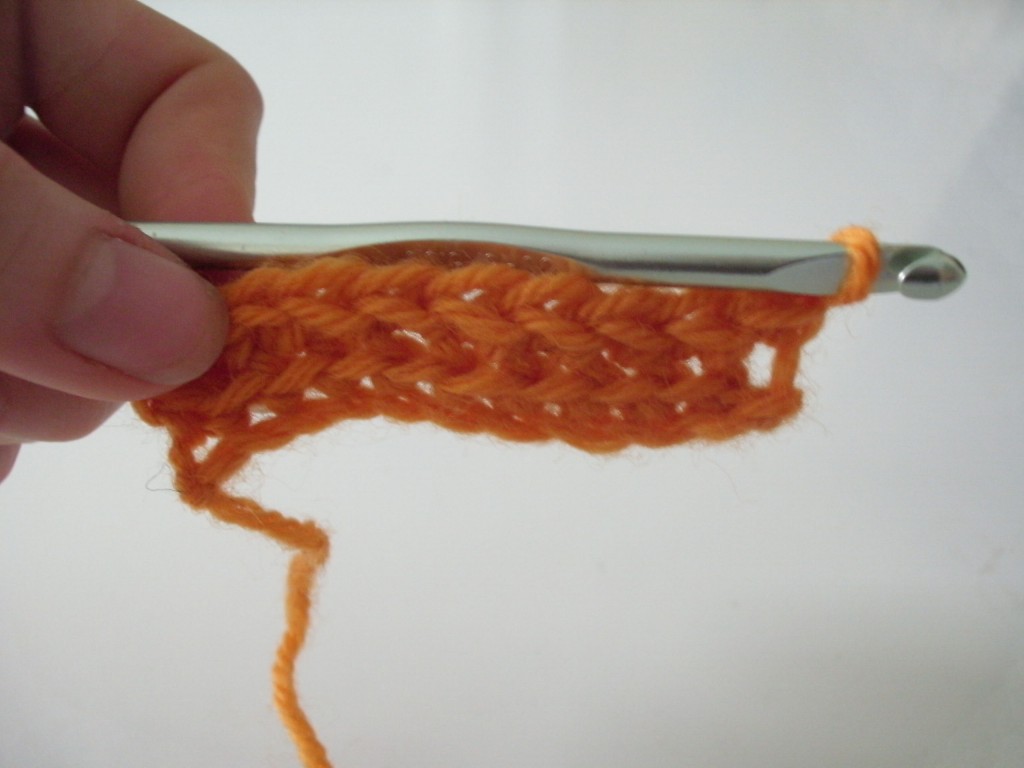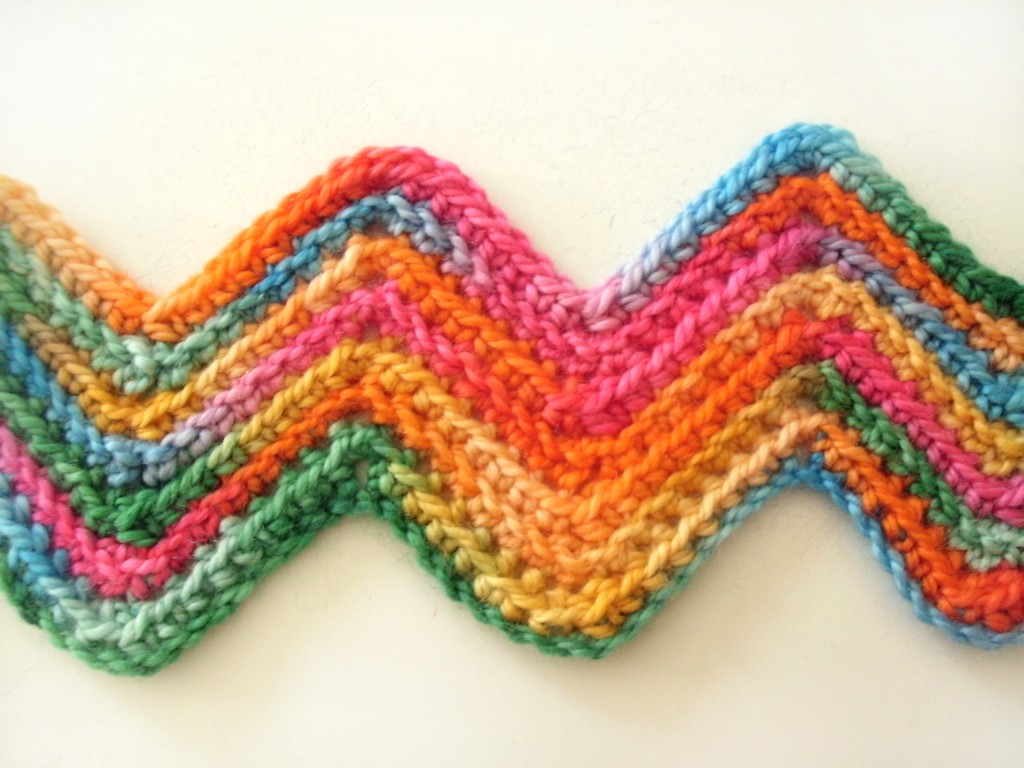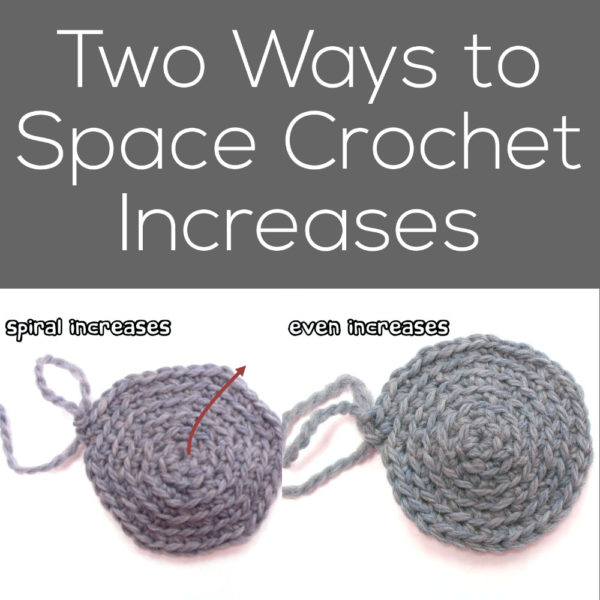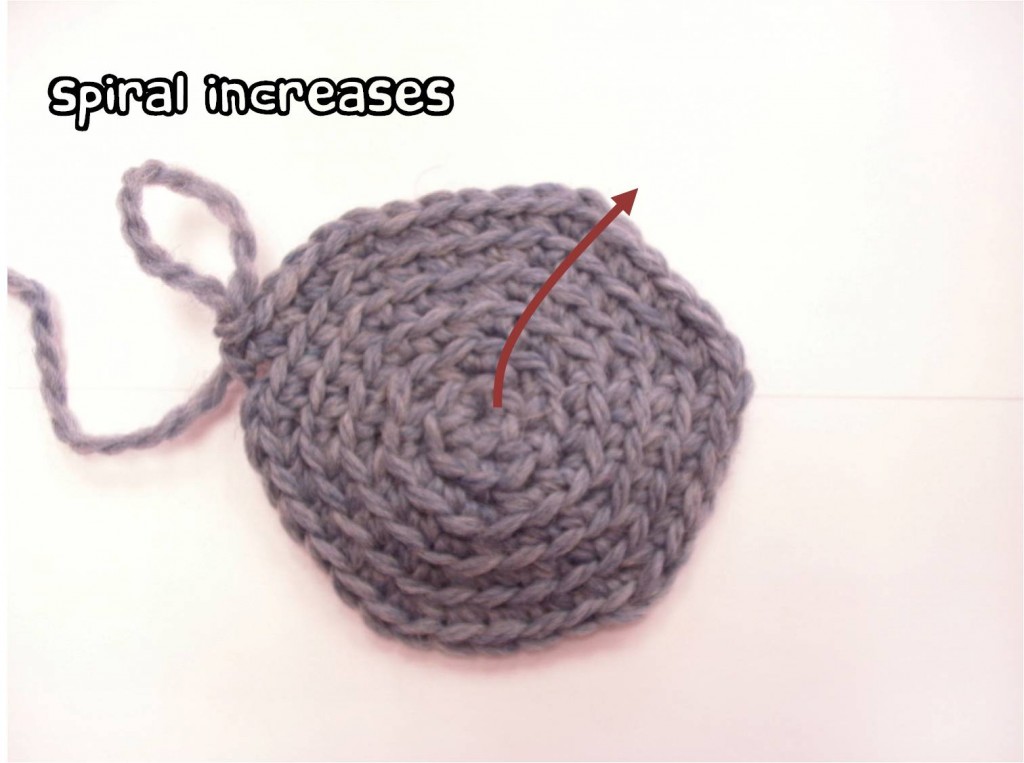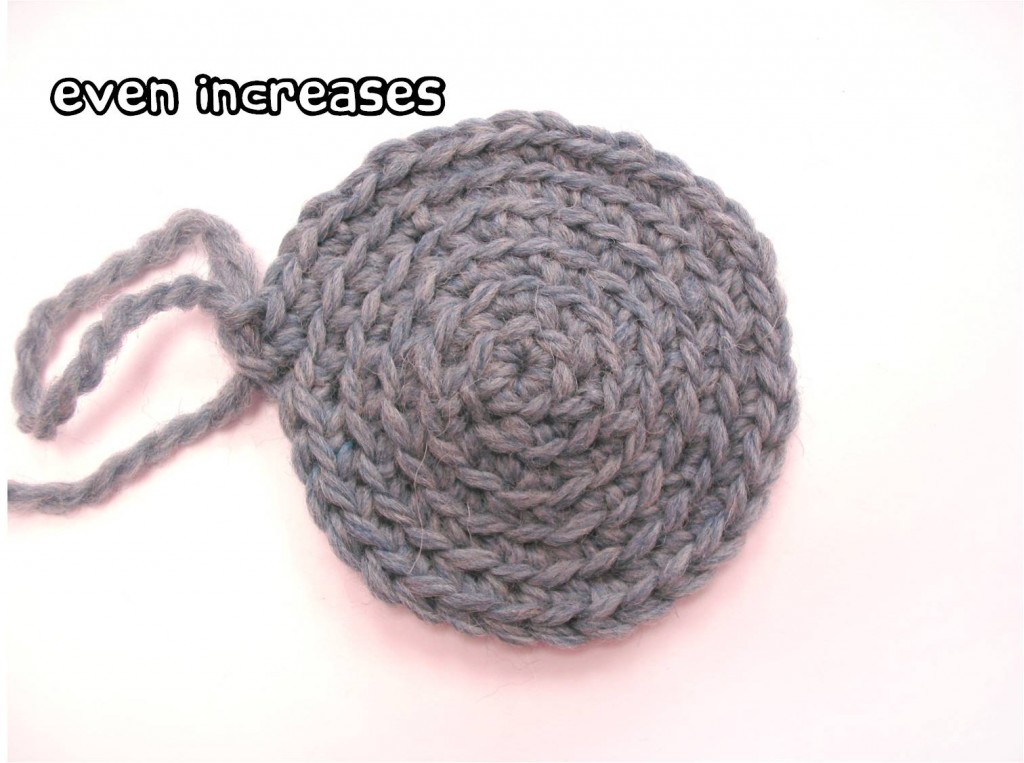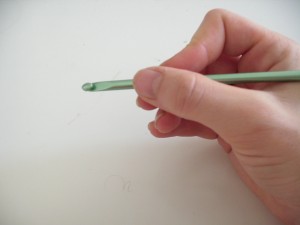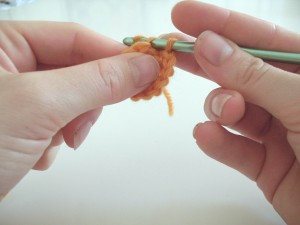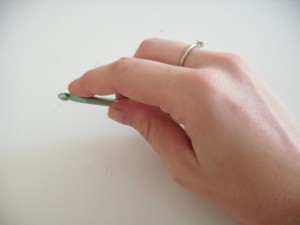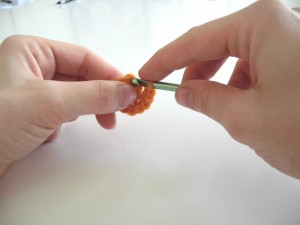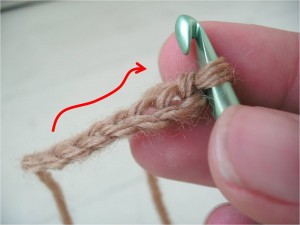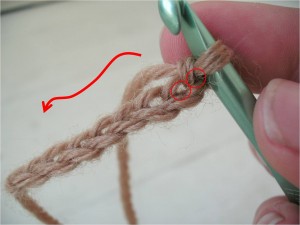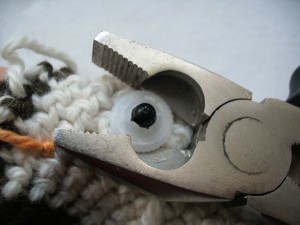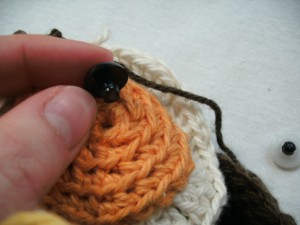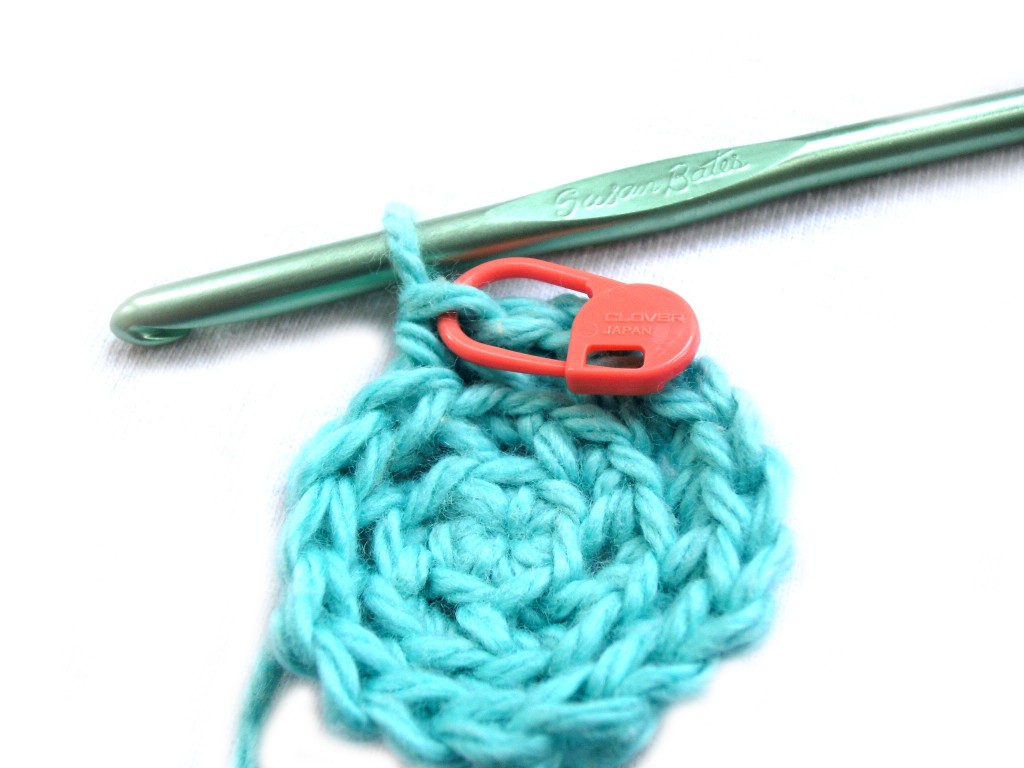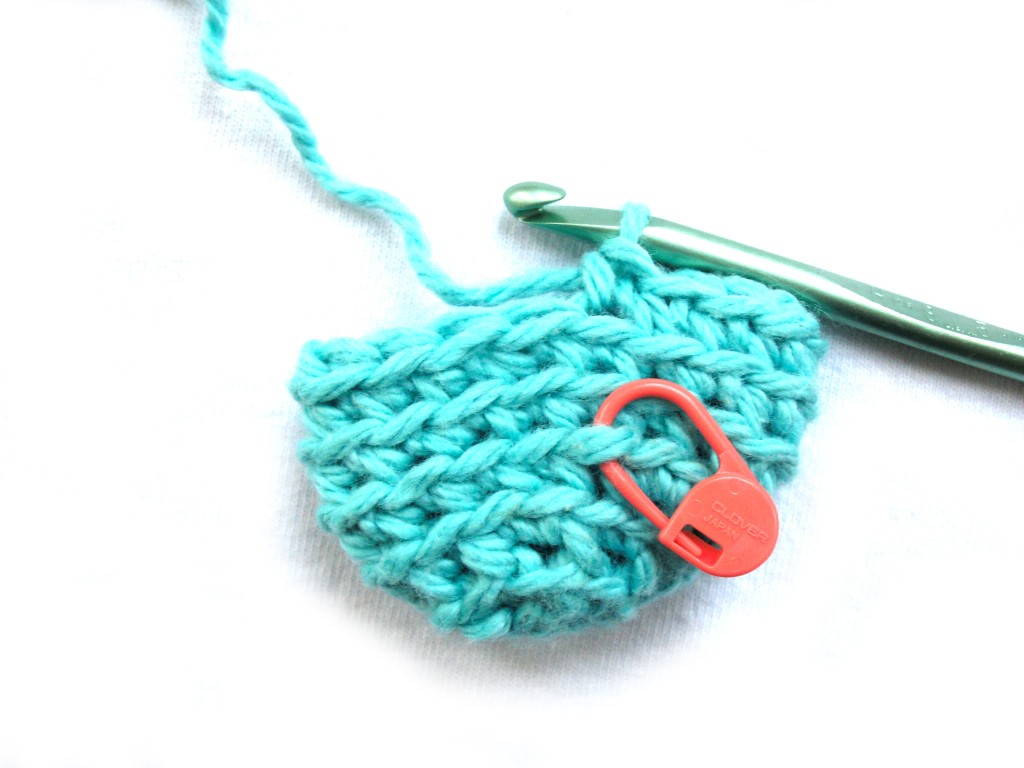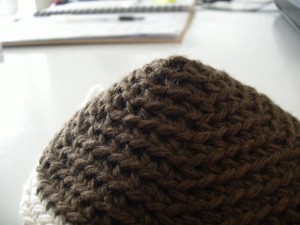Hi everyone! On this Tip Tuesday, I’m going to talk about how to crochet with 2 (or more) colors by stranding the unused color along the back of the work. This is a great technique to use for crocheting vertical stripes, or other patterns where there aren’t many stitches between color changes. Since I know a lot of you are visual learners (and sometimes photos just aren’t enough!), I’ve filmed a video tutorial. Scroll down to see it!
Last week, I received a custom order in my Etsy shop to crochet a zebrafish, a fish with black and white stripes. I used the Wal the Tiny Fish pattern, and instead of crocheting in one color, crocheted black and white stripes.
Since these stripes are vertical (with respect to the direction of crocheting), I needed to change colors every couple of stitches. Now, you can imagine how annoying it would be to cut the yarn and tie a knot every couple of stitches to change yarn… which is why I didn’t do that! Instead, I did something called ‘stranding’, which is carrying the unused color along the back of the work. Stranding is a great technique to use anytime there aren’t more than 4 or so stitches between color changes.
Here’s how it’s done:
Above is what the first half of my little zebra fishie looked like! You can see that there are vertical stripes, with the white stripes 2 stitches wide and the black stripes 3 stitches wide.
Okay, now it’s time for me to change colors (I’m at the end of a black stripe). If you’re unfamiliar with how to change colors cleanly, check out my tutorial on clean color changes. Now that it’s time to use the white yarn, I pick it up (it’s dangling in the back from the last time I used it) and pull it across the back of the work.
Now, using the yarn I just picked up, I’ll begin crocheting with it!
As you can see, when you look at the back of the work, you’ll have lots of little horizontal lines between each color change. Beautiful!
If you’d like to see this in action, check out my video:
As I said, this technique is best for when there aren’t too many stitches between color changes. So, what do you do when there are lots of stitches between changes, like for Nelson the Owl? I show you that in this post about working long color changes in crochet.

Here are handy links to all the posts about changing yarn color in crochet. . .
- How to Change Colors in Single Crochet
- How to Crochet Stripes with Minimal Jog
- How to Crochet with Two Colors – Stranding
- How to Strand Short Color Changes
- Tips for Working Long Color Changes in Crochet
- How to Do Barbershop Striping in Crochet
- How to Crochet in Joined Rounds
Return to the main table of contents for Let’s Learn to Crochet Amigurumi.
Move on to the lessons about crocheting stuffed animals in different sizes.
Happy stitching!







